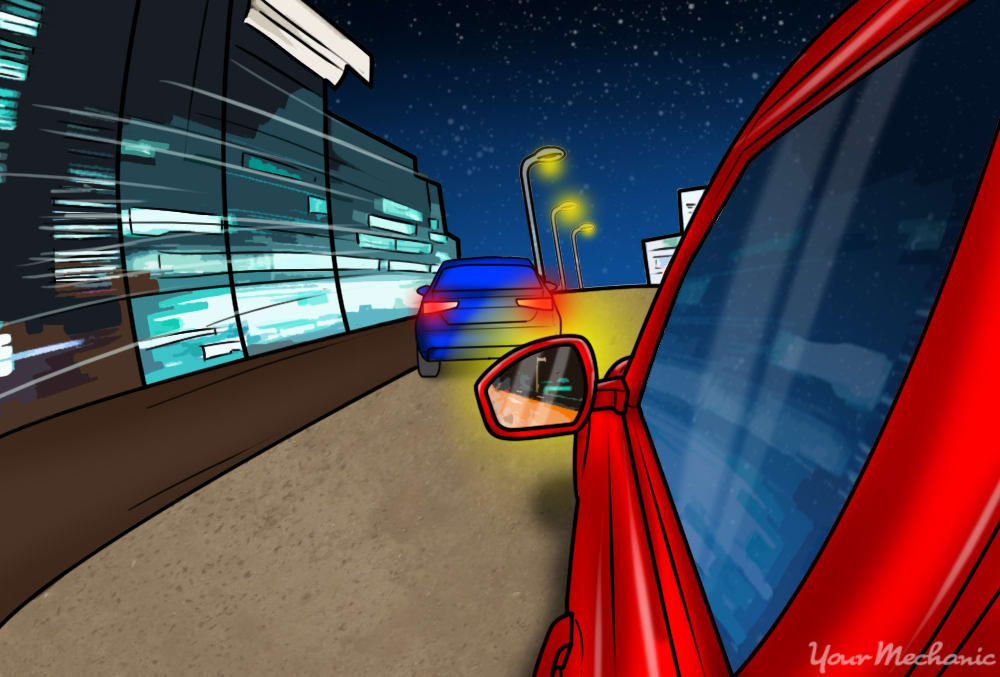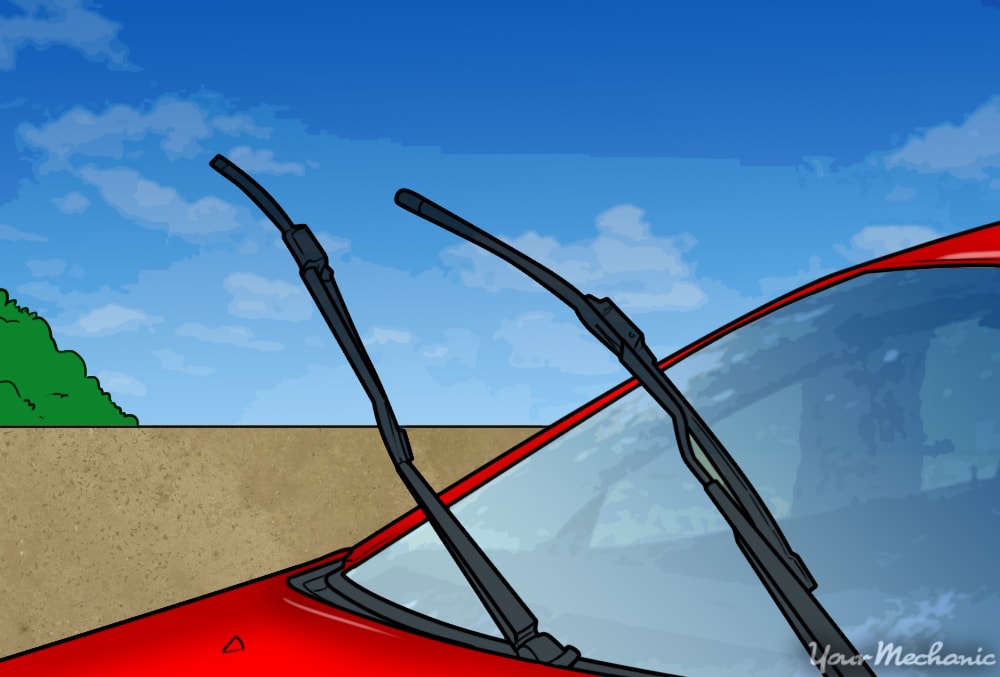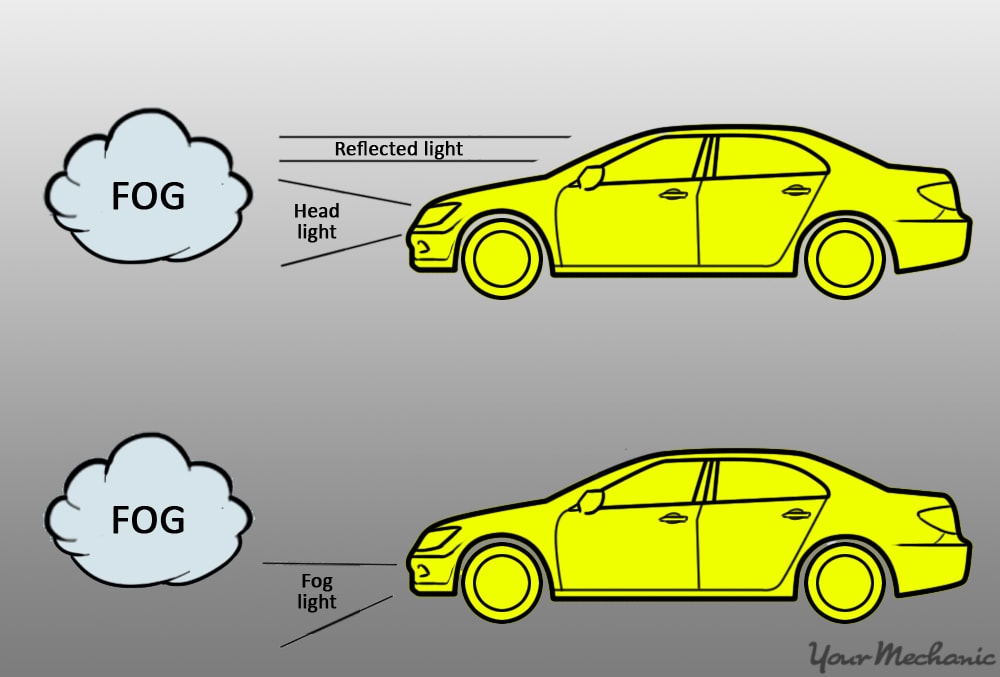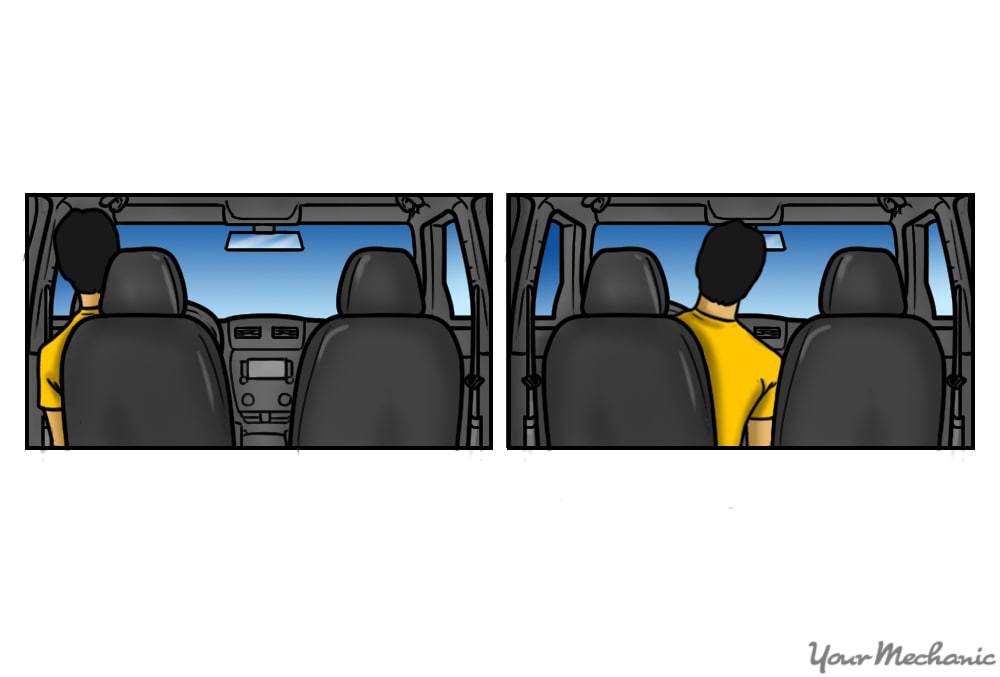

Driving at night is sometimes more difficult than daytime driving, especially in poorly lit areas. Also, as we age, declining eyesight can impact night driving. To drive safer at night, make sure to keep a few tips in mind such as cleaning your windows, making sure your vehicle is in good repair, and having your eyes checked as you get older.
Method 1 of 4: Clean your windows and mirrors
Materials Needed
- Glass cleaner
- Heavy-duty remover
- Mesh sponge
- Microfiber towels
Making sure your windows and mirrors are clear helps to prevent glare and makes it easier to see and drive at night. In addition to cleaning off dust and debris, you should also remove any bugs or stuck-on stains from windows and mirrors. You should finish cleaning the windows by making sure the windshield wiper blades remain free of dirt and grime.

Step 1: Use a heavy-duty cleaner on any stuck-on debris. Use a heavy-duty removal spray for stuck-on debris such as bugs.
Lift the wiper blades to the upright position. This allows you to get to the window's surface unhindered.
Spray the remover onto the stuck-on debris and let it soak in for ten minutes.
After letting it sit, use the mesh sponge to scrub the area.
Finish by rinsing the window with water, making sure that the chemical is completely removed.
Step 2: Clean the windshield. Using glass cleaner, clean the windshield one section at a time.
Working on half of the windshield at a time, spray glass cleaner on the windshield and wipe it up with a microfiber cloth. Clean using a vertical motion initially, switching to a horizontal cleaning motion. Wipe the window's surface until it is streak-free.
Step 3: Clean the rest of the windows. Working your way around the vehicle, clean the other windows with glass cleaner and a microfiber cloth.
This is also a good time to clean the side mirrors. Take care not to move the mirror while cleaning, otherwise you’ll need to remember to move the side mirror back into position before you drive.
Step 4: Clean the interior windows. After the outside glass is cleaned, it is time to clean the interior windows.
Work in sections when cleaning the front windshield and rear window.
In addition to the interior of your vehicle's windows, you also need to clean the rearview mirror.
Method 2 of 4: Observe safe driving practices
Being able to see properly does you no good if you do not use safe driving practices. This includes making sure your mirrors are properly adjusted, following safe practices when approaching a vehicle with its headlights on, and using methods to reduce eye strain while driving.
Step 1: Properly adjust your mirrors. An important step for driving safely at night is to properly adjust your mirrors.
To adjust the driver's side mirror, rest your head against the glass of the driver's side window. From this angle, adjust the mirror so that you can barely see the side of your vehicle.
To get the correct position for the passenger's side mirror, lean over so that your head is just over the center console. Adjust the mirror so that you can barely see the passenger's side of the vehicle.
For the rearview mirror, adjust it so that you get a full view of the roadway behind you.
- Tip: You should also use your rearview mirror's night mode. To switch from daytime to nighttime mode, flip the switch located at the bottom of the mirror. This angles the mirror so that the headlights of vehicles behind you are not shining directly into your eyes.
Step 2: Safely approaching oncoming traffic. When encountering oncoming traffic while driving at night, you can take certain steps to ensure that you can pass the oncoming vehicle without being blinded by their headlights.
The easiest way to protect your eyes is to focus on the solid white line that marks the side of the roadway.
In the absence of a line, you can focus on where the roadway meets the shoulder on the side of the road.
You can use your peripheral vision to keep track of the vehicle as it passes you, and then refocus on the road until you encounter the next vehicle, where you repeat the process.
Step 3: Reducing eye strain. Additionally, you can focus your eyes on distant spots of the road, vehicles ahead, or road signs to help reduce eye strain.
This also helps to reduce driver fatigue.
Also decrease the intensity of the console lights to reduce glare off of the windshield, making it easier to see and putting less strain on your eyes.
Step 4: Get plenty of rest. Make sure to get enough rest so that you're not drowsy while driving.
Drowsy driving is dangerous and can lead to an accident. If you are so sleepy that you can't keep your eyes open, you are better off pulling over and taking a quick nap in a safe place.
Another option if you are tired is to pull off at a gas station and drink a caffeinated beverage. However, you should be aware of your caffeine tolerance to avoid becoming jittery on the road later on.
Method 3 of 4: Have your eyes examined
As we age, our vision tends to deteriorate. Luckily, you can visit an optometrist to see about acquiring some corrective lenses. Not only can glasses or contacts help you see better at night, they can also reduce eye strain.
Step 1: Visit an optometrist. An optometrist can examine your eyes and determine if you are near- or far-sighted.
Once the diagnosis is achieved, you can move ahead in getting prescription glasses to help correct your vision.
A good rule of thumb, according to the American Optometrists Association on how often to get eye examinations is every two years from ages 18 to 60, and every year thereafter.
- Tip: Make sure to ask an eyewear professional about anti-glare coating for your glasses. An anti-glare coating helps reduce glare while driving, making it easier to see at night.
Method 4 of 4: Make sure your vehicle is in good repair
One final way to improve your overall safety when driving at night is to make sure your vehicle is operating efficiently. Some of the steps you can take include adjusting your headlights, replacing your headlights when the lenses get foggy, and installing fog lights to make it easier to see on foggy nights.
Step 1: Adjust your headlights. Occasionally, a vehicle's headlights get off kilter and need adjustment.
To adjust your headlights, find a level surface in front of a vertical wall. This could be a wall of your home or even the garage door.
Next, mark the vertical centerline for each headlight beam on the wall using masking tape.
Move the vehicle back 25 feet and remove the trim ring from around the headlights.
Use the horizontal and vertical adjusting screws to adjust each headlight to the specifications listed in the vehicle's operator's manual.
Block off the other light while adjusting to make it easier to see the light of the headlight you are adjusting. You can use a sweatshirt or other bulky object to do this.
Step 2: Replace foggy headlights. Over time a vehicle's headlight lenses become foggy and scratched, making it harder to illuminate the road ahead at night.
You should clean or replace your headlights when this happens. Or, if you are unsure about doing it yourself, have one of our expert mechanics replace the headlight for you.

Step 3: Add fog lights. In addition to replacing your headlight, you can also install fog lights on your vehicle.
Fog lights work by illuminating the space between the fog and the ground. This small space is created by the small cushion of air that supports the fog.
Fog lights also don't create as much glare, making it easier to see further in front of your vehicle without the need for glare-inducing bright headlights.
These simple ways to improve your ability to drive safer at night should enhance your nighttime driving experience if you put them to good use. Remember to always drive attentively, and if you find yourself in a situation that you are not comfortable driving in, pull over or ask a passenger to take over driving for you.




